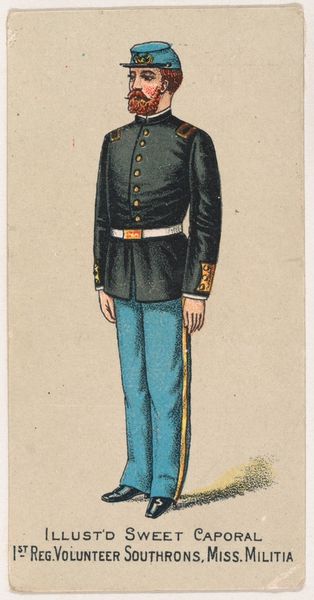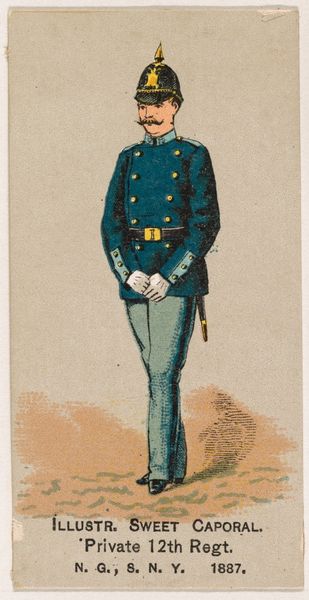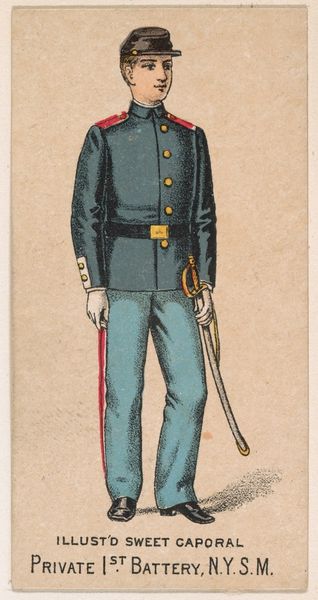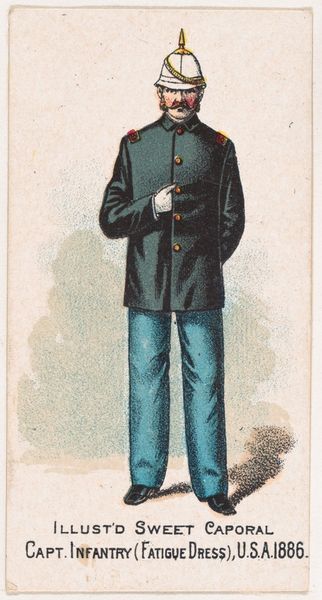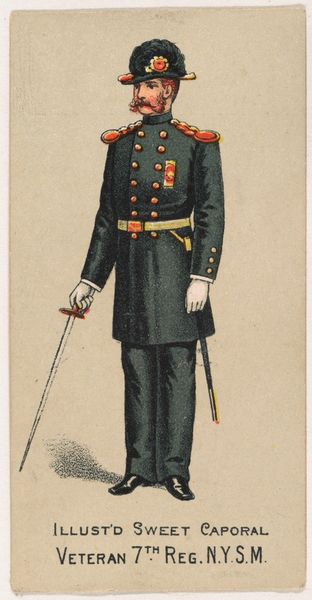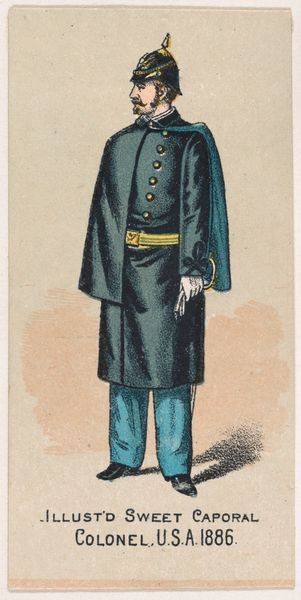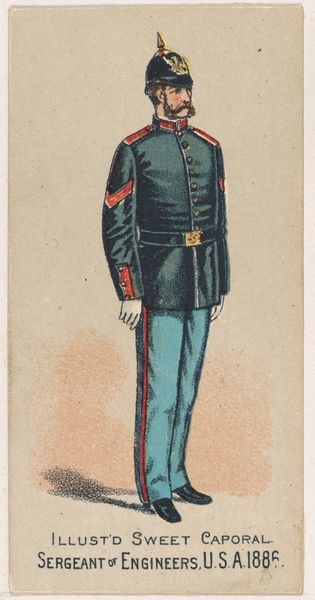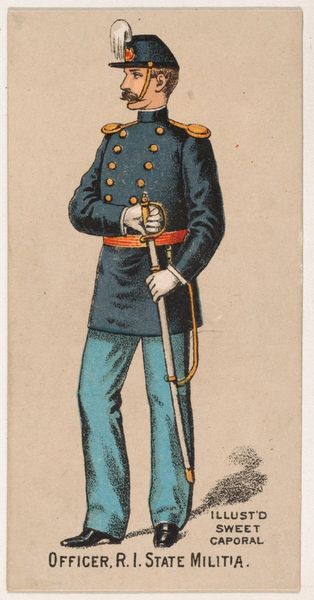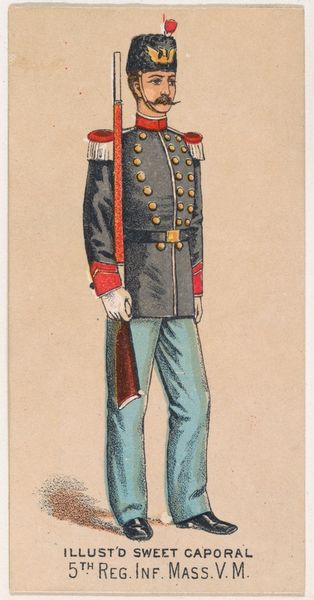
Officer, Custer Guards, Grand Rapids, Michigan Militia, from the Military Series (N224) issued by Kinney Tobacco Company to promote Sweet Caporal Cigarettes 1888
0:00
0:00
drawing, print
#
portrait
#
drawing
# print
#
caricature
#
traditional media
#
caricature
#
men
#
academic-art
Dimensions: Sheet: 2 3/4 × 1 1/2 in. (7 × 3.8 cm)
Copyright: Public Domain
Curator: This chromolithograph from 1888, titled "Officer, Custer Guards, Grand Rapids, Michigan Militia," was distributed by the Kinney Tobacco Company as part of their "Sweet Caporal Cigarettes" campaign. Editor: He strikes a peculiar pose. The almost cartoonish formality is what initially catches the eye; those bright blue trousers seem at odds with the seriousness the portrait tries to convey. Curator: Exactly. These trade cards, while seemingly innocuous, offer a window into the social landscape of the late 19th century. The Custer Guards themselves—note the name—reference a complicated historical legacy, given Custer’s controversial role in the Indian Wars. What’s being communicated about masculinity, militarism, and national identity? Editor: I see such pride distilled into the image’s symbols. The meticulously rendered uniform, with its gold buttons and elaborate helmet, speaks of a powerful institution. His poised stance suggests a quiet strength, doesn’t it? Like a visual emblem, the image speaks to a desire for order and assurance, reflecting both hope and anxiety regarding a tumultuous period of westward expansion and industrialization. Curator: Precisely. We can't separate this image from the narrative of American exceptionalism prevalent then, the idea of westward expansion as Manifest Destiny. Consider, too, that this image was a marketing tool; how does the commercialization of military figures contribute to constructing acceptable patriotic narratives, especially within shifting economic paradigms? The image acts almost like a recruiting poster packaged with consumer culture. Editor: And the symbols themselves carry historical echoes. His hands gently grasp the sword, symbolizing not brute force, but honor and authority. The facial hair – that well-groomed beard – aligns him with an archetypal ideal of Victorian manhood. I wonder what meanings these objects might carry for various audiences. Curator: Absolutely. For some, the image perhaps reinforced notions of duty and service; for others, particularly indigenous populations, it may have been a stark reminder of systemic oppression and disenfranchisement. And we need to remember, it circulated through a society wrestling with the legacy of Civil War. The consumption of such images shaped and reflected prevailing ideological currents. Editor: It's amazing to consider how many readings an apparently simple image like this one holds. It’s not merely a picture, it’s a cultural artifact that transmits encoded concepts of what it meant to be a man, a soldier, and an American in a very specific period. Curator: Indeed, a complex layering of propaganda and promotion which invites endless unpicking.
Comments
No comments
Be the first to comment and join the conversation on the ultimate creative platform.
